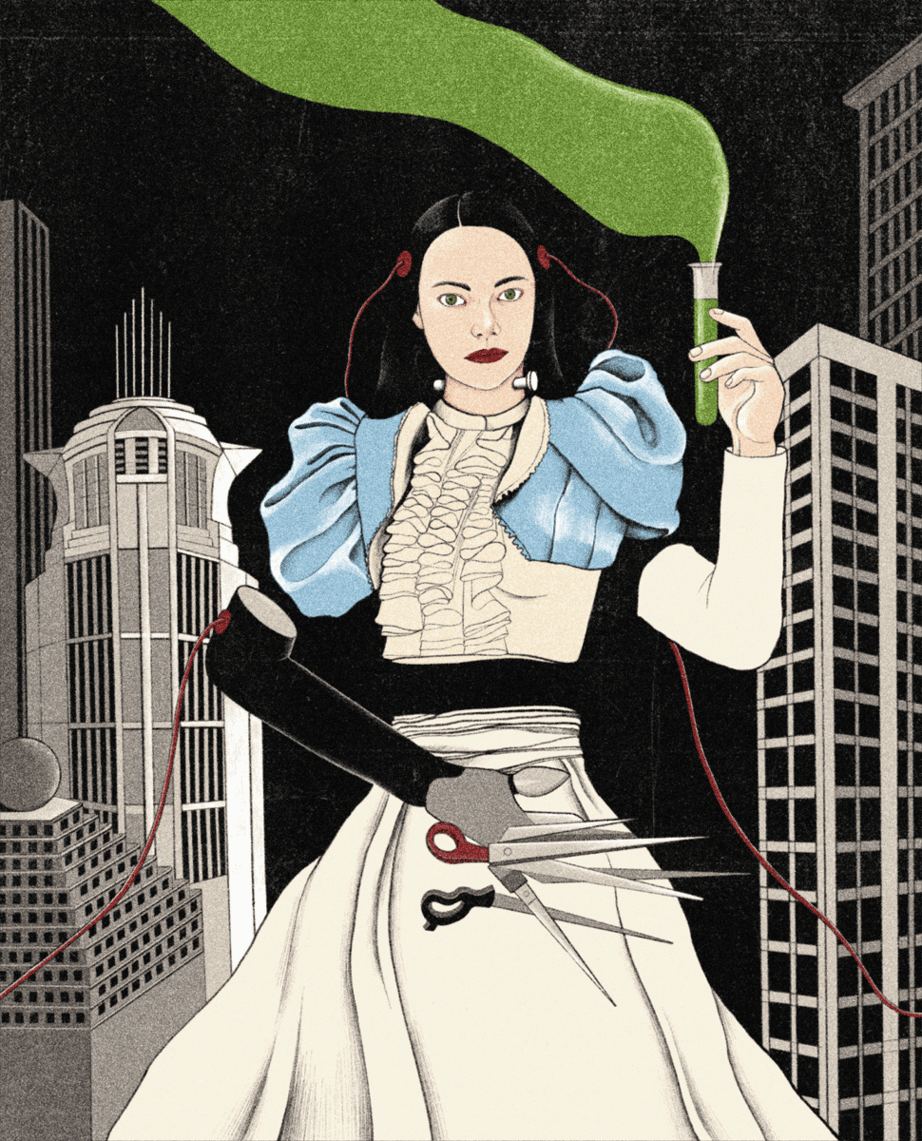Jane Austen mash-ups are fun, and that’s about all
“Can you get a bustle under vinyl?”
“No, no,” I answered, “that’s not a problem -- no bustles in the Regency Era.”
“Ah,” said my friend, “that makes things easier. So just tie-dyed muslin trimmed with, say, cerise fake fur.”
“And go-go boots, of course.”
“Of course.”
My Halloween costume this year was a horrifying success: No creature caused as much fear and loathing as Jane Austen Powers.
Ghastly, yes. But no worse than what we, as a culture, have been doing to her novels.
The Halloweenification of Jane Austen is a curious phenomenon. This year, a book called “Pride and Prejudice and Zombies” spent more than six months on the New York Times paperback fiction bestseller list. Its author, Seth Grahame-Smith has recently published the second installment in his gothic Austen series, “Sense and Sensibility and Sea Monsters.” In the same mini-genre but in a different, er, vein, Amanda Grange has written “Mr. Darcy, Vampyre.”
The implications of this influx of wildly popular spinoffs are terrifying. The year 2011 will mark the 200th anniversary of Austen’s first novel, “Sense and Sensibility.” Is 200 years too long? Do we now require the presence of sea monsters spawned in Disney’s Caribbean? Should we try to strike the mash-ups down with critical roundhouse kicks, as Elizabeth strikes down zombie attackers? Or should we invite these literary monstrosities in for tea?
All of this is part of a new vogue for literary mash-ups. The recipe? Take the pages of a classic novel, layer them with horror or science fiction, and half-bake them. Be careful when you open the door, for some terrifying, never-before-seen creature will jump out at you.
Sounds new, exciting, hipster-chic, right?
Yes . . . but maybe not. Mash-ups, after all, are as old as story. “ Cinderella.” “Frankenstein.” “Wuthering Heights.” “Hamlet.” Even the Bible.
More to the point, mash-ups are as old as Austen. The young, unpublished, not-even-close-to-iconic novelist finished the first version of “Northanger Abbey” in 1798 at the age of 23. The work is a lighthearted sendup of two kinds of novels: gothic and romance. Catherine Morland, naïve and quixotic, thinks she’s stepped into a gothic world of locked chests, hidden corridors and murderous husbands. Her wild fancies are framed by a simple, rather clumsily concluded love story. The comedy is in the contrast: It’s a silly, outrageous work. And yet Austen’s mash-up has a deeper message too, as we find that the plots of love we live in real life can be just as contrived as the plots of gothic novels, and that the imagined horrors of gothic novels are not as evil as the very real horrors of ordinary, everyday unkindness.
Is “Northanger Abbey” a canonical work? Probably not. In it, Austen famously defines a great novel as a “work in which the greatest powers of the mind are displayed, in which the most thorough knowledge of human nature, the happiest delineation of its varieties, the liveliest effusions of wit and humour, are conveyed to the world in the best-chosen language.” This definition certainly applies to the peerless five: “Sense and Sensibility,” “Pride and Prejudice,” “Emma,” “Mansfield Park” and “Persuasion.” Ironically, though, Austen doesn’t quite meet her own requirements in the casing novel itself -- but then, she hadn’t set out to write a canonical work. Rather, she’d set out to write a spoof.
Some works are for all time; some are just for their time -- maybe even for just a few bestselling weeks. Nothing wrong with that. So “Pride and Prejudice and Zombies,” “Sense and Sensibility and Sea Monsters” and “Mr. Darcy, Vampyre” probably won’t be around for very long. But as long as they are, we should get all the giggles and thrills we can. Judged on their own terms, mash-ups have a lot to offer. They’re fun to read. And they help us rediscover the joy of the originals.
Is 200 years too long? Hardly. Austen’s novels will renew themselves endlessly. “Pride and Prejudice” and the other greats will continue to be read and reread and revised and shaken and stirred into all sorts of literary concoctions. What I like about the recent mash-ups is that they show that the parodic runt “Northanger Abbey” is just as hearty as the others. Austen feared it was already stale when it was finally published in 1818, but it’s kept its modern edge.
So does Austen have anything to fear from the new mash-ups? Ha. As usual, she did it first, and she did it better. I wouldn’t be surprised to find out that she wore hot pink go-go boots underneath her gowns.
Carson is the editor of “A Truth Universally Acknowledged: 33 Writers on Why We Read Jane Austen.”
More to Read
The biggest entertainment stories
Get our big stories about Hollywood, film, television, music, arts, culture and more right in your inbox as soon as they publish.
You may occasionally receive promotional content from the Los Angeles Times.






